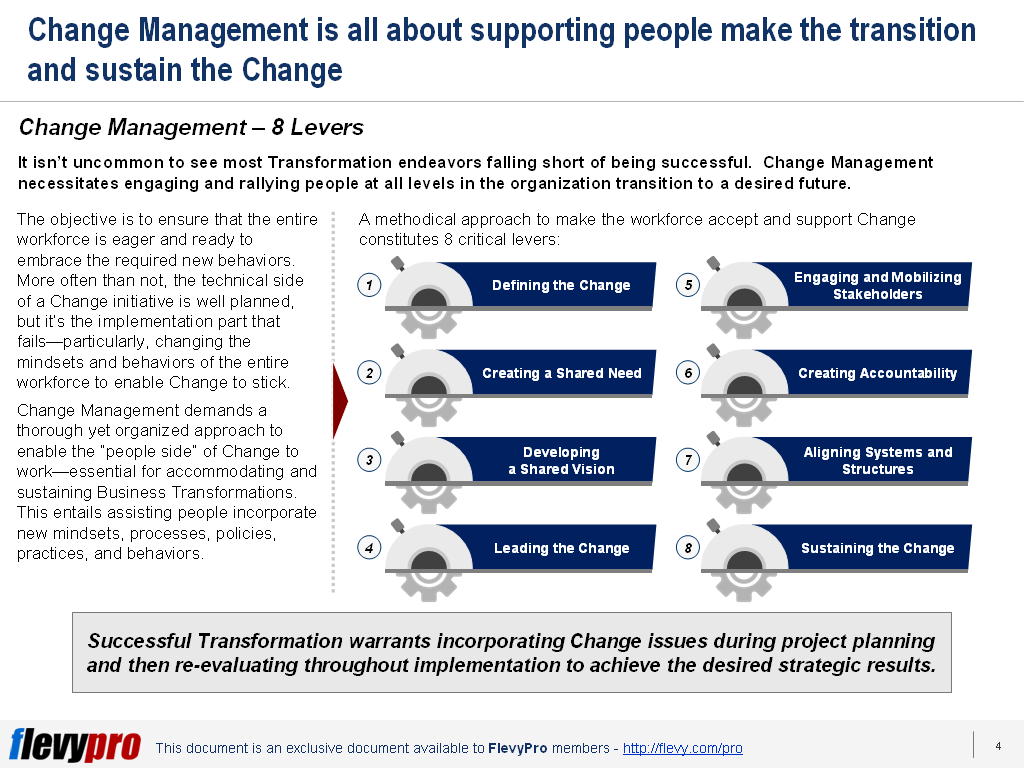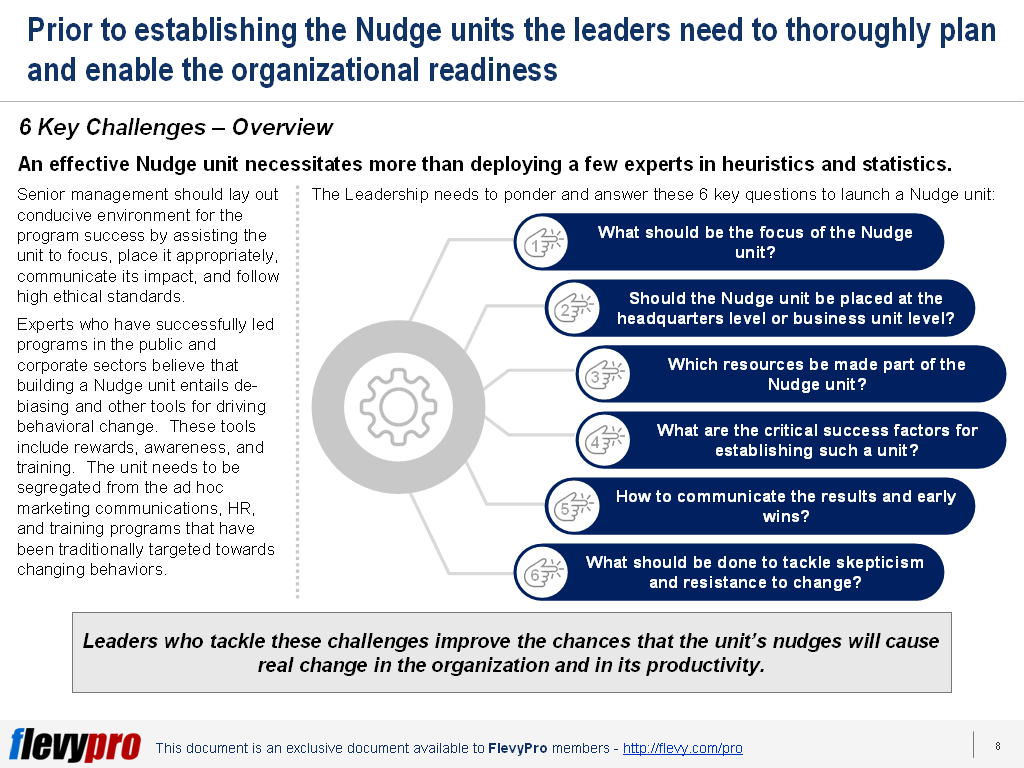The 8 Most Critical Levers to Pull to Manage & Sustain Change
28 Oct


Most Transformation initiatives fail to achieve their anticipated objectives.
Change Management is all about engaging and rallying people — at all levels in the organization — to make the transition and sustain that change. It is critical to ensure that the entire workforce is eager and ready to embrace the required new behaviors. More often than not, the technical side of a change initiative is well planned, but it’s the implementation part that fails — particularly, changing the mindsets and behaviors of the entire workforce to enable change to stick.
Managing change is not an occasional affair; it is an iterative process that works on motivating human behavior to accept and adjust to a desired state of mind. The process is naturally evolving as it adapts in accordance with the feedback from the people.
Change Management demands a thorough yet organized approach to enable the “people side” of change to work — essential for accommodating and sustaining Business Transformations. This entails assisting people incorporate new mindsets, processes, policies, practices, and behaviors.
A methodical approach to make the entire workforce accept and support change constitutes 8 critical levers:
- Defining the Change
- Creating a Shared Need
- Developing a Shared Vision
- Leading the Change
- Engaging and Mobilizing Stakeholders
- Creating Accountability
- Aligning Systems and Structures
- Sustaining the Change

Now, let’s discuss the first 4 levers in detail.
1. Defining the Change
The first step entails outlining the rationale, scope, and results of the change initiative for the enterprise, key departments, and roles. There is a need to define critical elements, including the requirements from the initiative, the execution planning, and the adjustments needed to encourage people to work better.
The project sponsors need to clearly outline the essence of the proposed Transformation initiative, to realistically embed Change Management into the design of the program, and develop effective Change Management plans. An initial baseline of the expected effect of the program on people should be performed. The baseline also helps analyze the impact of the change program — in terms of skills inventory, head-count indications, adjustments in accountabilities and relationships, shifts in incentives and pay structures, and future learning needs.
2. Creating a Shared Need
Once the change and its impact has been delineated, the next thing to do is to create a shared understanding of the rationale for Transformation across the organization. To create a shared need for the Transformation endeavor, the change sponsor needs to build awareness of the necessity for change amongst the senior team, key stakeholders, and the entire organization; demonstrate to the people the benefits of change; and set up a feedback mechanism across the organization. The alignment afforded by developing a shared need for change helps build a strong footing for Transformation.
3. Developing a Shared Vision
An essential element of implementing transformation entails delineating a clear vision that outlines critical actions and the anticipated outcomes. It helps in encouraging and involving the workforce in the Transformation initiative, giving them a sense of purpose by becoming a part of something bigger. The vision of the organization after Transformation should be coherent with the company values and mission.
4. Leading the Change
This lever entails developing change leadership and implementation skills needed to drive and enable sustainable change. Engagement and commitment of senior leaders is essential for leading change. They are responsible for planning their and the entire workforce’s actions, demonstrating or role modeling the new mindsets and actions, designating program sponsors — e.g., business unit leaders who are enthusiastic about the Transformation initiative and also act as change agents — motivating others to support transformation, and setting up a road map for the change leaders to steer the organization to achieve the anticipated performance milestones.
Interested in learning more about these levers to Change Management? You can download an editable PowerPoint on 8 Levers to Change Management here on the Flevy documents marketplace.
Are you a Management Consultant?
You can download this and hundreds of other consulting frameworks and consulting training guides from the FlevyPro library.















